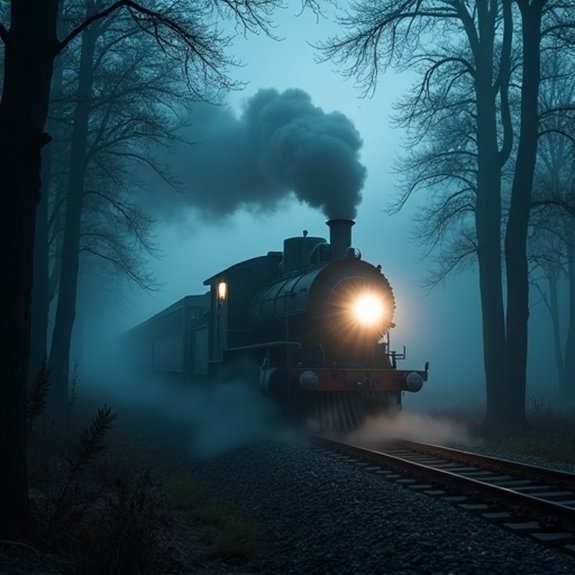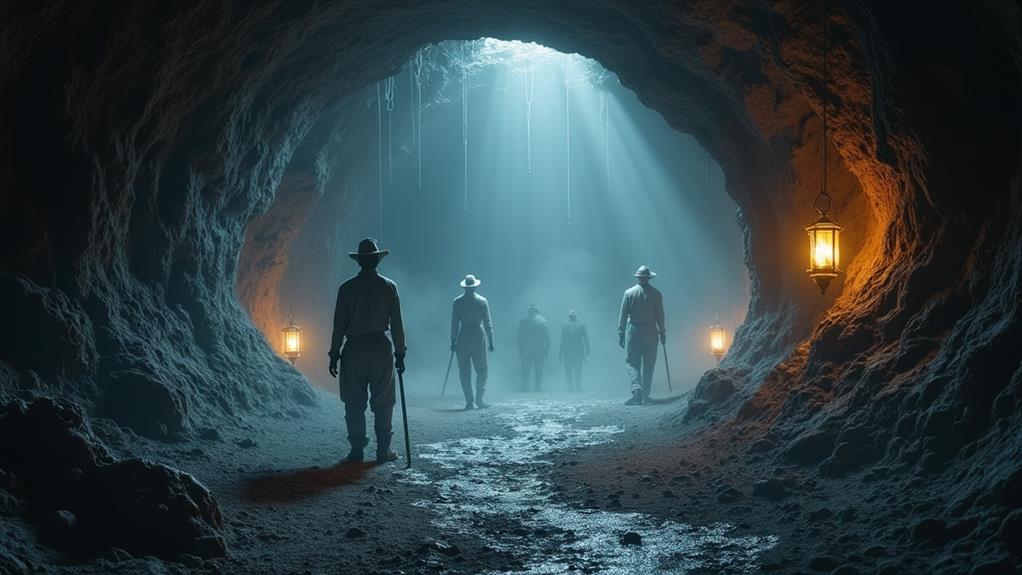Phantom Trains Across the World
Railway phantom sightings aren’t confined to one region or era. They’ve emerged across continents, each carrying distinct historical baggage and local lore. From Britain’s foggy moorlands to America’s abandoned tracks, witnesses report similar phenomena: vintage locomotives that shouldn’t exist, mournful whistles where no trains run, and spectral lights along defunct railways. What drives these persistent accounts, and why do they cluster around sites of Victorian-era disasters?
Introduction

While modern railways run on precise schedules and GPS tracking, there’s a shadowy parallel world of trains that don’t appear on any timetable—phantom trains that witnesses swear they’ve seen, heard, and sometimes even boarded. These spectral locomotives materialize from fog banks, thunder past crossings that haven’t existed for decades, and vanish into tunnels that lead nowhere. They’re reported on every continent where railways operate, defying explanation and challenging rational thought.
From Britain’s infamous ghost train at Bostian Bridge to Canada’s St. Louis Light phenomenon, these apparitions share striking similarities despite vast geographic distances. Witnesses describe vintage steam engines with lit carriages, mysterious whistles echoing through valleys, and the distinctive clacking of wheels on tracks that were torn up years ago.
Victorian Era Railway Disasters
Though railways revolutionized Victorian transportation, they also introduced catastrophic accidents that shocked the public and left lasting scars on collective memory. The 1879 Tay Bridge disaster killed seventy-five people when Scotland’s longest bridge collapsed during a storm, plunging a train into the frigid waters below. Britain’s deadliest crash occurred at Quintinshill in 1915, where signaling errors caused three trains to collide, killing 227 passengers and troops.
These tragedies spawned enduring ghost stories. Witnesses claim they’ve seen spectral locomotives racing through fog at disaster sites, heard phantom whistles piercing the night, and spotted ghostly passengers waiting at abandoned stations. The Victorian era’s rapid industrial expansion came with a deadly price that still haunts railway folklore today.
Notable Cases or Sightings

Britain’s most documented sighting occurs at Lindal Railway Station, where a Victorian-era steam engine appears monthly. In 1892, a train crashed there, killing the engineer and fireman. Station workers now report seeing the phantom locomotive‘s headlamp approaching before it vanishes.
Canada’s St. Louis Ghost Train Light has attracted investigators since the 1920s. The mysterious orb travels along abandoned tracks where a conductor died searching for his severed head after a collision. Scientists haven’t explained the phenomenon despite numerous studies.
Common Theories or Explanations
When investigators examine phantom train reports, they typically propose several scientific explanations before considering paranormal causes. They’ll first check for actual trains running on nearby active tracks, as sound can travel surprisingly far under certain atmospheric conditions. Temperature inversions and fog banks can bend both light and sound, creating auditory illusions of locomotives that aren’t there.
Infrasound, vibrations below human hearing range, can trigger hallucinations and feelings of dread. Old railway infrastructure sometimes produces these frequencies when wind passes through tunnels or bridges. Some researchers suggest electromagnetic fields from buried rails might affect the temporal lobe, causing sensory disturbances. Others point to collective memory and cultural storytelling, where communities perpetuate legends that prime witnesses to misinterpret natural phenomena as ghostly trains.
Frequently Asked Questions
Can Phantom Trains Cause Physical Harm to Witnesses Who Encounter Them?
No, phantom trains can’t cause physical harm to witnesses since they’re supernatural apparitions without physical substance. However, witnesses have reported psychological effects like fear, anxiety, and shock from encountering these ghostly locomotives unexpectedly.
What Time of Day Are Phantom Train Sightings Most Commonly Reported?
Most phantom train sightings occur during nighttime hours, particularly between midnight and 3 AM. Witnesses frequently report encounters at dusk or dawn when visibility’s limited. Darkness seems to enhance these apparitions’ mysterious nature and atmospheric conditions.
Are There Any Smartphone Apps for Tracking Phantom Train Sighting Locations?
There aren’t any dedicated smartphone apps specifically for tracking phantom train sighting locations. However, paranormal enthusiasts often use general ghost-hunting apps like Ghost Radar or Paranormal Live to document their experiences at reportedly haunted railway sites.
Do Animals React Differently to Phantom Trains Compared to Humans?
Animals often react with heightened fear to phantom trains, showing signs humans don’t typically display. Dogs howl, horses bolt, and birds flee before witnesses see anything. They’ll sense the apparition’s presence through vibrations first.
Which Countries Have Officially Documented Phantom Train Incidents in Government Records?
No countries have officially documented phantom train incidents in government records. While folklore and witness accounts exist worldwide, governments don’t formally recognize supernatural phenomena. Reports remain in local histories, newspapers, and paranormal investigation files instead.


